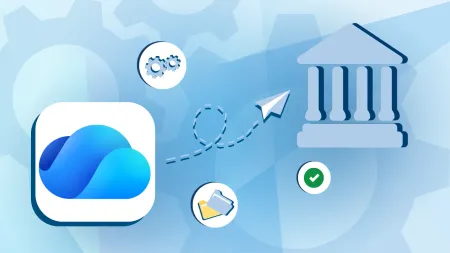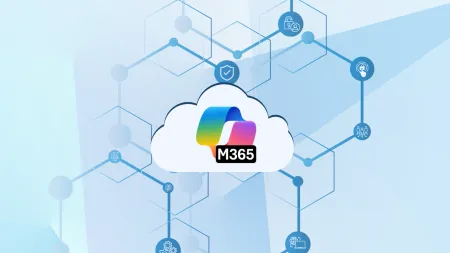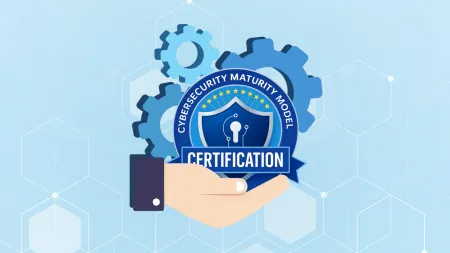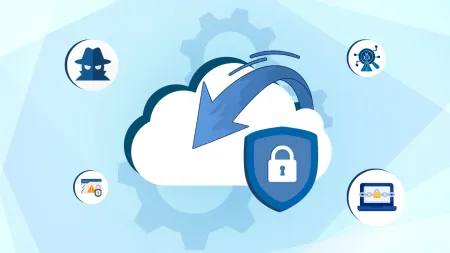Communication Habits of Highly Successful Remote Teams
Remote work is more popular than ever According to the stylefontweight 400Bureau of Labor Statisticsstylefontweight 400https...

Remote work is more popular than ever. According to the Bureau of Labor Statistics, 23% of employees did some or all of their work at home. There’s a remote work revolution that’s not slowing down, and odds are your or at least one of your colleagues works remotely. The ability to work remotely has many positive effects. It helps to close workplace gender gaps, and remote workers are often more productive than counterparts. However, remote work can come with a number of challenges, many of which are rooted in communication issues.
Remote communication can be challenging
Working as a remote team can be rewarding, but these groups face unique challenges. Technology has opened up new styles of working away from the office, but these come with problems like:
Prevalent isolation
Communication is necessary and helps us feel connected, but remote work can be lonely. Losing out on regular physical interaction with coworkers can be difficult. 21% of remote workers identified loneliness as the biggest struggle they face. Loneliness often results in lower morale, which affects performance and mental health. It also leads to higher turnover, which has far-ranging effects.
Slower-growing trust
Technology allows us to have conference calls, instant messages, and video chats from nearly anywhere on the globe. However, it’s harder to build trust over digital communication than in face-to-face interactions. We’re wired to tap into minute human details, from facial expressions to tone to body language. These interactions innately help us build trust and develop relationships. Working in a physically different space than colleagues gives fewer opportunities for the small interactions that help build trust – bumping into someone in the office kitchen, complimenting a coworker’s jacket, and other “water cooler” moments. Sending messages over text or digital media can easily be misinterpreted, as well. “Email recipients only identified seriousness or sarcasm 56% of the time.”
Abundant distractions
$588 billion is lost to distractions each year in the United States. While offices have their own distractions, and working from home can be less distracting than other environments, remote work comes with unique distractions. Clutter can stack up quickly. Interruptions from family or friends can be frequent. Remote workers may also be tempted to spend more time procrastinating.
More complex scheduling
Whether it’s working in different time zones, scheduling meetings around appointments, or otherwise, remote teams can face more frequent scheduling challenges. When team members are online at different times of the day (or week), this necessary mix of synchronous and asynchronous communication can introduce obstacles.
Overlooked cultural differences
In an increasingly global economy, it’s important to acknowledge the cultural differences of remote teams. Undercommunication or lack of cultural understanding can lead to wasted effort or make team members feel uncomfortable.
Unexpected technical difficulties
How long did your last conference call go? Technology enables remote work, but it’s not perfect. When WiFi or mobile connections run into issues or collaboration platforms experience downtime, productivity can grind to a halt. Being too reliant on technology or not spending enough time vetting it can result in unforeseen consequences that break down communication.
Using communication habits to make your remote team successful
“I will communicate as much as possible, because it’s the oxygen of a distributed company.” - Automattic Creed Communication is a foundational aspect of any organization. Here are foundations and how to build healthy remote communication:
Set expectations
Get started on the right foot by gathering gather team input and getting everyone on the same page. Figure out what works best for your team in terms of communication styles, meeting cadence, and common vocabulary. That includes setting expectations around how long to expect an email reply, when to meet about topics, and what constitutes interruptions. No one likes to be in the middle of their “flow” state and be thrown off by a flashing “Hey!” alert.
Identify the appropriate communication method
Do you need to get a quick yes or no answer? That’s probably a good use case for an instant messaging platform. Have a performance review? Video chat is probably the next-best thing to discussing it in-person.
Choosing the most appropriate communication method can be the difference between a quick and productive conversation and a drawn-out inefficient one. Knowing your team’s communication expectations, choose the best way to communicate for a given situation.
Focus on transparency
It’s easy to miss new developments when you’re not in the same office, even with standup meetings. Find a way to check in frequently and loop in the team when decisions occur or progress is made. Perhaps more important, help them understand why things happen. What went well? How can things improve?
Find opportunities to share details and solicit input on work. At best, this will provide valuable opportunities for members to add their own experience to save effort, keep the team invested in success, and help everyone learn from solutions. At the very least, you’ll be able to document for posterity.
Clarify and keep your cool
It’s easy to misunderstand others when not communicating in-person. With digital communication, there are fewer queues to tap into. Research from Chatham University has shown that friends are no better than strangers in identifying tone and emotion in email messages. It may be a hard habit to start, but err on the side of being more descriptive whenever possible. Additionally, be aware of cultural differences when it comes to communication styles, personality, approaches to conflict, and leadership. Overcommunicate, and assume the best intentions. “As e-mail, text messaging, and other forms of computer-mediated communication become more dominant forms of interaction, the communication of affect becomes more difficult, primarily because facial expressions, gestures, vocal intonation, and other forms of expressing emotion are lost.” - Monica A. Riordan, PhD at Chatham University
Recognize individual and team contributions
Recognizing contributions is one of the best ways to keep teams engaged. By openly acknowledging contributions, team members are likely to better understand why their contributions matter and improve morale. Specific, timely, and frequent recognition has also been proven to reduce turnover and boost productivity. Think about using an employee recognition platform to give your team a competitive edge.
Use the right tools (and have back up plans)
Use technology, but don’t be so reliant on tools that you won’t be able to function if you can’t access them all the time. Know what you’re going to do when your internet connection cuts out or your favorite collaboration tools encounters maintenance issues. Need some recommendations? Here are a few useful collaboration tools:
- Slack – Communicate both synchronously and asynchronously. The calling, video, and screen pairing features are designed to help teams communicate better.
- Range – Share updates regularly and get to know your team.
- Donut – Meet up or chat with colleagues who you normally don’t interact with. (And make new friends!)
- Basecamp – Work on projects asynchronously with an easy way to reference each other and related resources.
- Google Sites – Create a wiki or knowledge base to house institutional knowledge.
- Asana – Collaborate, organize, and track project updates in one place.
- Google Hangouts – Use video chat to build trust and have meetings that leave little room for misunderstanding.
- Google Docs and Office365 – Collaborate on documents, presentations, and more.
- Bonusly – Fun, personal recognition that improves team engagement and shares new happenings with the team.
Don’t forget about face-to-face interactions
It’s hard to beat the power of face-to-face communication. Participating in an in-person conversation allows us as humans to add more depth and nuance to conversations. Since we’re naturally primed for this method of interaction, and it creates trust, friendships, and memories that are worth far more than travel costs and logistics. Even distributed companies like Zapier and Trello hold regular team offsites where the whole team comes together. While a distributed team inherently can’t be together all the time, carve out time (even if it’s only once a year) to gather everyone in the same place. Decentralized teams are increasingly becoming the norm. While it’s not always easy to communicate as a remote worker, adopting the right kind of communication habits can go a long way to increasing efficiency, happiness, and overall success. The whole team stands to benefit when remote teams communicate better.
Big Thanks to Bonus.ly
This is Agile IT’s first guest blog. We’d like to send big thanks over to our friends at Bonus.ly for providing this content. Bonus.ly is a peer-to peer recognition platform used by Agile IT and hundreds of modern workplaces to encourage team cohesion, collaboration and recognition.





